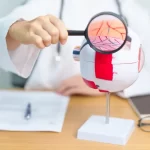
Acne scars are the marks or indentations left behind by acne, which can impact the appearance and texture of the skin. They can be a source of self-consciousness and affect one’s confidence. Acne scars can come in different forms, and it is important to identify the type of scars to determine the appropriate treatment. Here are the most common types of acne scars and non-surgical acne scar treatments available:
Types of Acne Scars
Acne scars can vary in appearance and depth, and it’s essential to identify the type of acne scars you have before choosing a treatment. Here are the five most common types of acne scars:
- Ice Pick Scars
Ice pick scars are deep and narrow scars that resemble small, deep holes on the skin’s surface. They are usually caused by inflammatory acne, and their size can vary from shallow to deeper indentations.
- Boxcar Scars
Boxcar scars are wider and have sharp edges, resembling small craters on the skin. They are typically shallow to moderately deep and can vary in size. Boxcar scars are caused by inflammatory acne and can be found on the cheeks and temples.
- Rolling Scars
Rolling scars have a wavy or rolling appearance, with gently sloping edges. They are caused by the fibrous bands of tissue that develop between the skin and underlying subcutaneous tissue. Rolling scars often give the skin a rough and uneven texture.
- Hypertrophic Scars
Hypertrophic scars are raised and thickened scars that form as a result of excess collagen production during the healing process. They are usually found on the chest, back, and shoulders and can be itchy or uncomfortable.
- Keloid Scars
Keloid scars are similar to hypertrophic scars but extend beyond the original boundary of the wound. They are raised, thick, and can be larger than the original acne lesion. Keloid scars are more common in people with darker skin tones.
It’s important to note that the severity and type of acne scars can vary from person to person. Therefore, it’s crucial to consult with a skincare professional or dermatologist for an accurate diagnosis and personalized treatment plan. They can guide you on the most suitable non-surgical acne scar treatments based on your specific type of acne scars.
Non-Surgical Acne Scar Treatments
When it comes to treating acne scars, there are various non-surgical acne scar treatments available that can help improve the appearance of your skin. These treatments are less invasive than surgical procedures and often require little to no downtime. Here are some of the most common non-surgical acne scar treatments:
Topical Treatments
Retinoids: These topical medications contain vitamin A derivatives, such as tretinoin, adapalene, and tazarotene, that help reduce acne breakouts and stimulate collagen production in the skin. They can improve the texture and appearance of acne scars over time.
Fractional CO2 Laser
This laser treatment uses targeted beams of light to resurface the skin and stimulate collagen production. It can help improve the appearance of acne scars by reducing their depth and smoothing out the skin’s texture. Fractional CO2 laser treatments may require multiple sessions for optimal results.
Dermal Fillers
Dermal fillers: These injectable substances, such as hyaluronic acid or collagen, are used to fill in depressed acne scars and plump up the skin. Dermal fillers can provide immediate results and can last several months to a year, depending on the type of filler used.
Subcision
Subcision is a minor surgical procedure that involves using a small needle or blade to break up the fibrous bands beneath the skin that are causing depressed acne scars. This allows the collagen to regenerate and helps lift the scarred area. Subcision is often combined with other treatments, such as dermal fillers or laser resurfacing, for best results.
These non-surgical acne scar treatments offer effective options for improving the appearance of acne scars without the need for surgery. It’s important to consult with a dermatologist or skin care professional to determine the best treatment plan for your individual needs.







